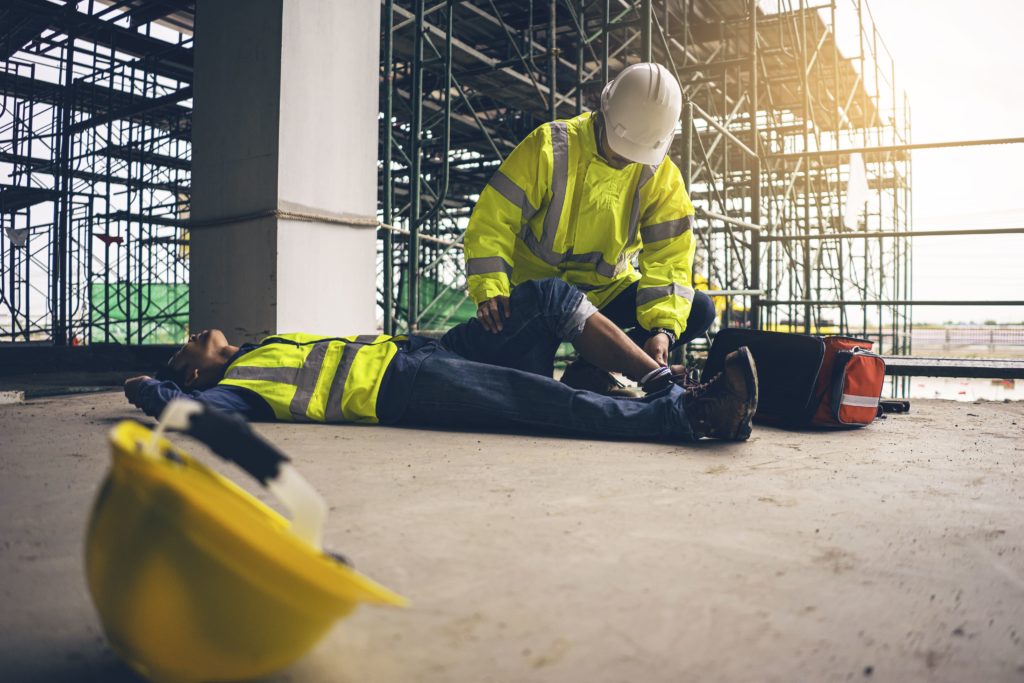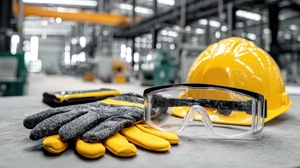Scaffolding Hazards and Safety Measures

Last week, our blog focused on the types of scaffolds. We also defined what a scaffold is and briefly touched on scaffolding safety. Today’s article is dedicated to the various types of scaffolding hazards that construction workers and other workers who use, assemble, dismantle, repair, maintain, move, or inspect scaffolds may face. Besides, workers working close to, below, or around scaffolding must also be trained and given knowledge of the scaffolding hazards that they may face.
Consequently, the Occupational Health and Safety Administration (OSHA) provides extensive guidance on scaffolding safety.

Importance of Scaffolding Safety
Scaffolding safety is critical as working on scaffolds results in workers working at heights. When working at heights, there are many dangers that workers may face. According to OSHA, nearly 65 percent of construction workers equivalent to 2.3 million people work on scaffolds (n.d.). With proper preventive measures, as many as 4,500 scaffolding-related injuries could be averted (n.d.). According to the U.S. Bureau of Labor Statistics (BLS), between 2003 and 2004, as many as 4,500 people working on scaffolding were injured, while more than 60 were killed annually. Even more interesting is that the majority of these scaffolding accidents are attributed to workers falling from scaffolds or being struck by falling objects, or due to scaffolding collapses due to improper planking.
The data above highlights the importance of employers and employees both taking scaffolding safety seriously. As such employers should provide employees with adequate training constituting online and/or classroom training, as well as on-site/on-the-job training to ensure that workers who work on scaffolds as part of their work tasks are well-aware of the myriad scaffolding hazards and are knowledgeable on how to best avoid and prevent such scaffolding hazards from occurring.

Four Major Types of Scaffolding Hazards
There are four major types of scaffolding hazards that workers should be mindful of. These are falling, struck by, electrocution, and scaffold collapse.
Falling from Scaffolds
Working on scaffolding requires workers to work at heights. As a result, there is ample opportunity for workers to fall off a scaffolding. Workers can fall off a scaffold due to many reasons, from lack of guardrails to slipping or tripping on slippery substances, wearing inappropriate footwear, or even due to tools or other debris lying on scaffolding surfaces. Workers can also fall from scaffolding when they are entering or getting off scaffolding if the access being used is not according to OSHA specifications.
Another way in which a person can fall from scaffolding is when working on a scaffold in winter, in wet weather conditions, or in unfavorable weather conditions. The risk to workers is increased mainly due to ice formation, snow turning to sludge, water puddles, or high wind conditions that may result in fall, slip, and trip hazards.
Struck by Falling Objects
When working on scaffolding workers must also take care that they are not struck-by falling objects or materials from a higher level. Not only are workers on lower levels at risk from this type of scaffolding hazard, but other construction personnel working in proximity to scaffolding are also in danger of getting hit by a falling object such as a tool, a paint can, or even a brick.
Electrocution
Electrical hazards are prevalent when working on scaffolds as workers may have to undertake welding, cutting, or other hot work while being stationed on a scaffold. Hence, workers must ensure to follow the guidelines given by OSHA’s Scaffolding Standard for electrical work on scaffolding and beware of electrocution hazards that can occur on the different types of scaffolds depending on the type of work being carried out. When scaffolds are built of metal, electrocution hazards are more imminent! Also note, that building scaffolds close to energized powerlines are frowned upon. OSHA has a set of rules for maintaining appropriate clearance distances between scaffolds and powerlines to ensure worker safety and avoid electrocution hazards.
Scaffolding Collapses
When scaffolds are not built to specifications there is a danger that the scaffold can collapse. There are different regulations for different types of scaffolds that OSHA recommends. A suspended scaffold should use strong ropes and be securely attached to a permanent structure. The tiebacks, wire rope clips, counterweights, hoists, and locking system should be inspected by a competent person as recommended by OSHA regulations to ensure that using such scaffolds will not endanger workers’ lives.
When erecting supported scaffolds, OSHA provides detailed guidance on how to construct platforms including:
- the type of planking to be used – wood, metal, fabricated planks;
- the condition of the wood and the type of wood to use for wooden planks;
- Lumber grading requirements;
- the spacing between planks;
- how the planks should be laid to form a strong platform;
- the allowable spans - meaning the distance allowed between supports;
- the allowable deflection – meaning the bend of the work platform;
- the gaps between supports and planks;
- how to restrain scaffolding with guys, ties, and braces;
- the width and length of platforms;
- types of finishes to be used on wood platforms; and
- the compatibility of components used in scaffolding, among others.
For both suspension scaffolds and supported scaffolds, following the recommended load capacity is imperative as overloaded scaffolds can collapse or tilt.
Safety Measures
Now that we have got a good idea as to the main hazards associated with working on and using scaffolding, let us see what scaffolding safety measures are available to safeguard the safety and health of employees. Note that most of these are derived from OSHA’s Scaffolding Standard, which is the best way to protect workers' health and safety from all types of scaffolding hazards.
Fall Protection
- Using personal fall arrest systems
- Installing guardrails, mid-rails, and top rails in both suspended and supported scaffolds on all open sides
- Using personal protective equipment (PPE) such as hardhats, anti-slip boots, etc.
- Not working on scaffolds that are covered in snow piles, or have been iced over in winter before clearing has taken place
- Not working on scaffolds during snowstorms, thunderstorms, or high wind conditions
Falling Objects Protection
- Using PPE such as hardhats
- Installing toe-boards or screens so that materials and objects do not slide off the scaffolding platform
- Ensuring the guardrail systems maintain small openings to prevent objects from slipping off
- Erecting debris nets, catch platforms, or canopies to stop or redirect the falling objects
- Ensuring that hand tools and other objects are kept away from the edge of the scaffold
Electrocution Protection
- Following OSHA recommendations regarding:
- Maintaining distances between a scaffold and insulated powerlines
- Undertaking welding and other types of electrical work on the different types of scaffolding
- Wearing PPE such as rubber gloves
- Not working on scaffolds in bad weather conditions, especially electrical or thunderstorms
Safeguards Against Scaffolds Collapsing
- Following OSHA’s Scaffolding Safety Standard recommendations and guidelines:
- on building scaffolds
- on using scaffolds
- on dismantling scaffolds
- Ensuring the scaffold is designed by a qualified person
- Ensuring the scaffold is inspected by a competent person daily before work begins
Worker Training
As mentioned at the start of this article, worker training is an important element of scaffolding safety. Make sure workers who are expected to use or work on scaffolding have adequate knowledge about the types of scaffolds, the general requirements for scaffolding, how to safely access scaffolding, fall protection and other hazards of scaffolding, scaffolding safety measures to use, and the requirements for specific types of scaffolds should be part of the overall worker training program.
Our OSHA Scaffolding Safety course for construction workers is developed based on OSHA’s Scaffolding Regulations as codified in 29 CFR 1926 Subpart L.
Take this opportunity and enroll in our program to work safely and securely on scaffolds and avoid being exposed to scaffolding hazards.
References:
OSHA. (n.d.). Scaffolding. Website. [PDF]. https://www.osha.gov/sites/default/files/notes.pdf

 EN |
EN |  ES
ES
































































































































